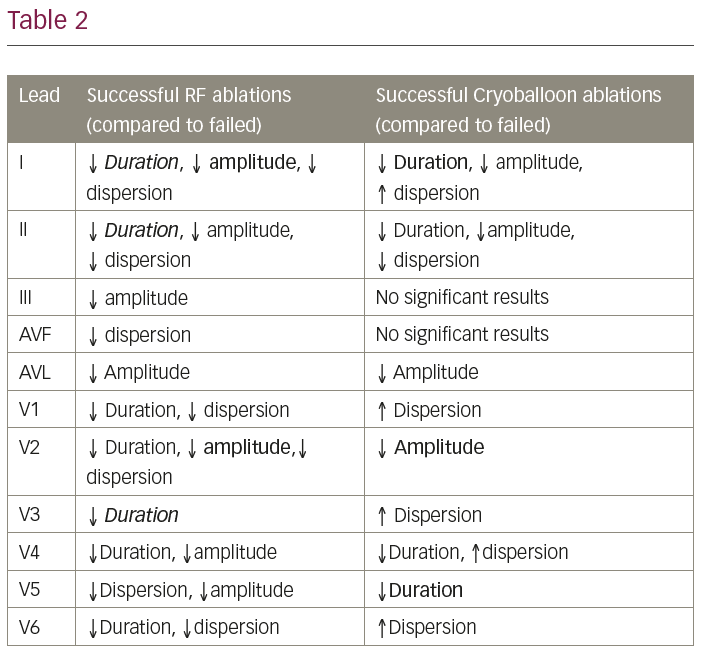Introduction: Atrial fibrillation (AF) is the most common arrhythmia diagnosed in clinical practice. Mechanism of paroxysmal AF is suggested to be trigger points across the atrium caused by inflammation which can turn into fibrosis of the atrium which we call substrate (2). Pulmonary vein ablation is used to ablate trigger points to treat paroxysmal AF, the two methods of doing that are point by point radiofrequency ablation and cryoballoon ablation.
Methodology and population: One-hundred-and-seventy patients with paroxysmal atrial fibrillation who had at least one pulmonary vein ablation procedure between March 2016 and March 2018 were part of the study.
The ablations were as follows:

P wave Duration, amplitude and dispersion were measured before and after the ablation in each of the 12 leads. We measured how much the P wave measurements decreased or increased after the ablation procedure. The P wave changes in the radiofrequency ablation group were compared to the changes in the cryoballoon ablation group.
Results: Statistically significant results are illustrated in the following chart:

The bold represents a result of P value <0.005
Conclusion: In patients with paroxysmal atrial fibrillation, successful pulmonary vein ablation is associated with decreased P wave duration and amplitude in both cryoballoon ablation and radiofrequency ablation. Successful cryoballoon pulmonary vein ablations were associated with increased P wave dispersion. Successful radiofrequency ablations were associated with decreased P wave dispersion.
References
1. Morillo CA, Banerjee A, Perel P, et al. Atrial fibrillation: the current epidemic. J Geriatr Cardiol. 2017;14(3):195–203.
2. Verma A. Trigger versus substrate ablation for atrial fibrillation. Journal of Atrial Fibrillation. 2008;1(2):18.
3. Anderson JL, Halperin JL, Albert NM, et al. Management of patients with atrial fibrillation (compilation of 2006 ACCF/AHA/ESC and 2011 ACCF/AHA/HRS recommendations): a report of the American College of Cardiology/American Heart Association Task Force on Practice Guidelines. J Am Coll Cardiol. 2013;61(18):1935–44.
4. Ogawa M, Kumagai K, Vakulenko M, et al. Reduction of P-wave duration and successful pulmonary vein isolation in patients with atrial fibrillation. J Cardiovasc Electrophysiol. 2007;18(9):931–8.







